Books and Special Issues
Artificial Neural Networks and Machine Learning -- ICANN 2014, 24th International Conference on Artificial Neural Networks
 |
Stefan Wermter,
Cornelius Weber,
Wlodzislaw Duch,
Timo Honkela,
Petia Koprinkova-Hristova,
Sven Magg,
Günther Palm,
Allessandro E.P Villa
(Eds.).
Springer International Publishing, 2014. The book contains the results of the 24th International Conference on Artificial Neural Networks, ICANN 2014, held in Hamburg, Germany, in September 2014. The research areas of the papers include: recurrent networks; competitive learning and self-organisation; clustering and classification; trees and graphs; human-machine interaction; deep networks; theory of neural networks; reinforcement learning and action; neural networks for vision; supervised learning; dynamical models and time series; neuroscience models and neural network applications. Details: Book details |
|
|
|
NEURAL NETWORKS: 2009 SPECIAL ISSUE - What it Means to Communicate
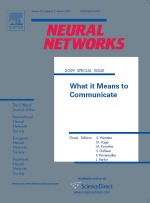 |
Stefan Wermter, Martin Page, Michael Knowles, Vittorio Gallese, Friedemann Pulvermüller and John Taylor.
Elsevier, Volume 22, Number 2, March 2009. The general aim of this special issue is to focus on "What it means to communicate" and to understand the neural, cognitive, formal, computational and developmental features that have led to communication differences between humans and animals. Details: Book details |
|
|
|
Biomimetic Neural Learning for Intelligent Robots
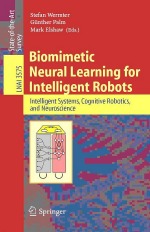 |
Stefan Wermter, Günther Palm, Mark Elshaw.
Springer-Verlag, Heidelberg, Germany, July 2005. This book presents research performed as part of the EU project on biomimetic multimodal learning in a mirror neuron-based robot (MirrorBot) and contributions presented at the International AI-Workshop in NeuroBotics. The overall aim of the book is to present a broad spectrum of current research into biomimetic neural learning for intelligent autonomous robots. There is a need for a new type of robots which is inspired by nature and so performs in a more flexible learned manner than current robots. This new type of robots is driven by recent new theories and experiments in neuroscience indicating that a biological and neuroscience-oriented approach could lead to new life-like robotic systems. Details: Book details |
|
|
|
Emergent Neural Computational Architectures based on Neuroscience
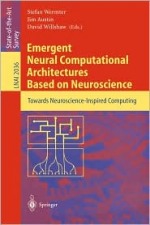 |
Stefan Wermter, Jim Austin, David Willshaw.
Springer-Verlag, Heidelberg, Germany, March 2001. This book is the result of a series of International Workshops organised by the EmerNet project on Emergent Neural Computational Architectures based on Neuroscience sponsored by the Engineering and Physical Sciences Research Council (EPSRC). The overall aim of the book is to present a broad spectrum of current research into biologically inspired computational systems and hence encourage the emergence of new computational approaches based on neuroscience. It is generally understood that the present approaches for computing do not have the performance, flexibility and reliability of biological information processing systems. Although there is a massive body of knowledge regarding how processing occurs in the brain and central nervous system this has had little impact on mainstream computing so far. Details: Book details |
|
|
|
Hybrid Neural Systems
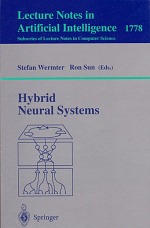 |
Stefan Wermter, Ron Sun.
Springer-Verlag, Heidelberg, Germany, March 2000. The aim of this book is to present a broad spectrum of current research in hybrid neural systems, and advance the state of the art in neural networks and artificial intelligence. Hybrid neural systems are computational systems which are based mainly on artificial neural networks but which also allow a symbolic interpretation or interaction with symbolic components. Details: Book details |
|
|
|
Connectionist, Statistical and Symbolic Approaches to Learning for Natural Language Processing
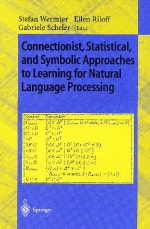 |
Stefan Wermter.
Springer Verlag, Berlin, Germany, 1996. The purpose of this book is to provide an introduction to the field of connectionist, statistical and symbolic approaches to learning for natural language processing, based on the contributions in this book. Details: Book details |
|
|
|
Hybrid Connectionist Natural Language Processing
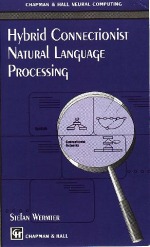 |
Stefan Wermter.
Chapman and Hall, International Thomson Computer Press, London, UK, January 1995. The objective of this book is to describe a new approach in hybrid connectionist natural language processing which bridges the gap between strictly symbolic and connectionist systems. This objective is tackled in two ways:the book gives an overview of hybrid connectionist architectures for naturallanguage processing; and it demonstrates that a hybrid connectionist architecture can be used for learning real-world natural language problems. Details: Book details |